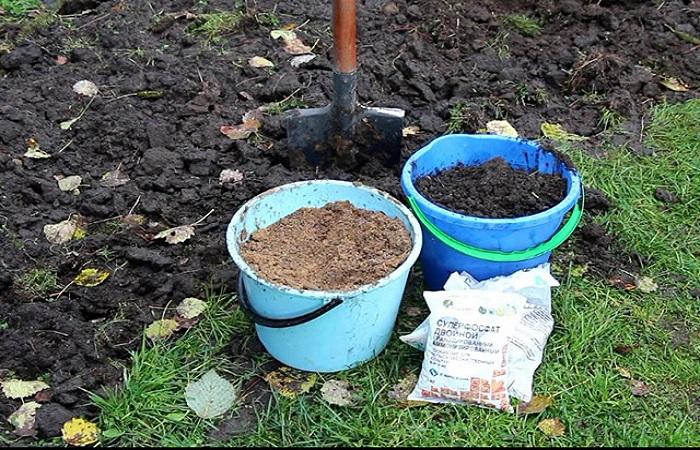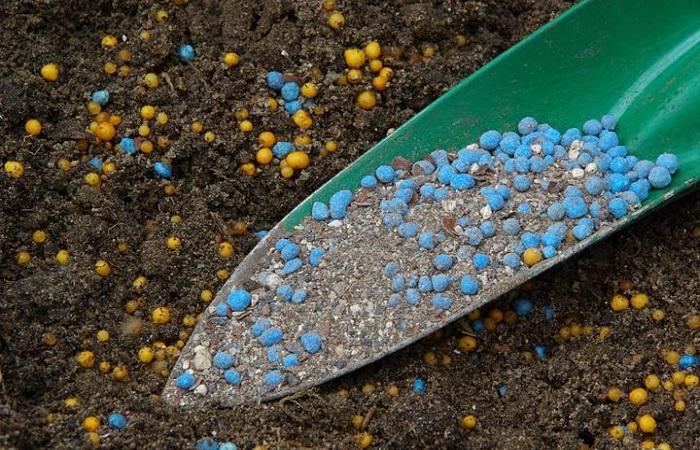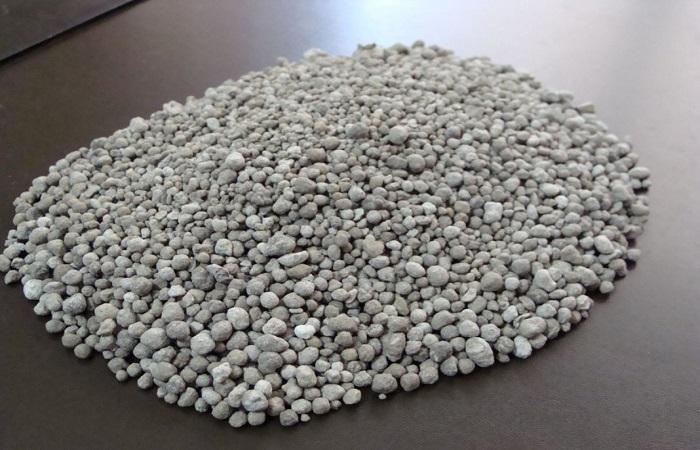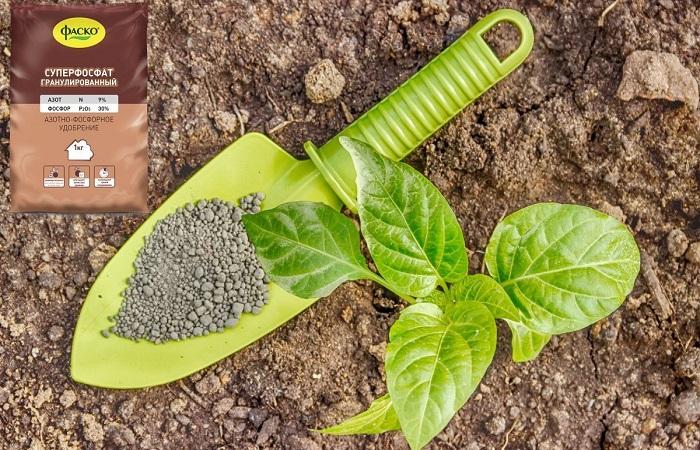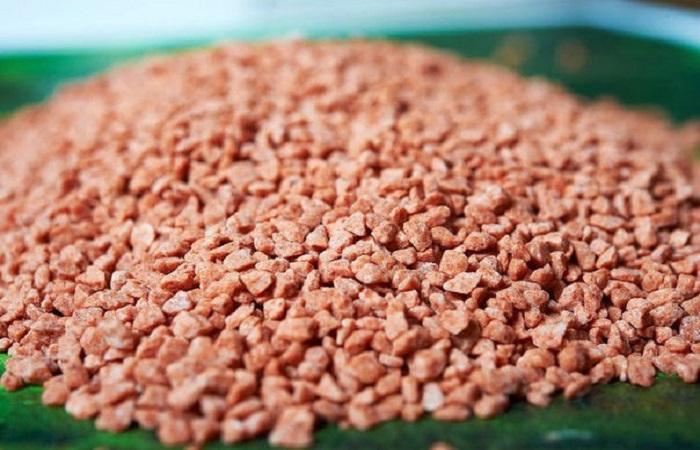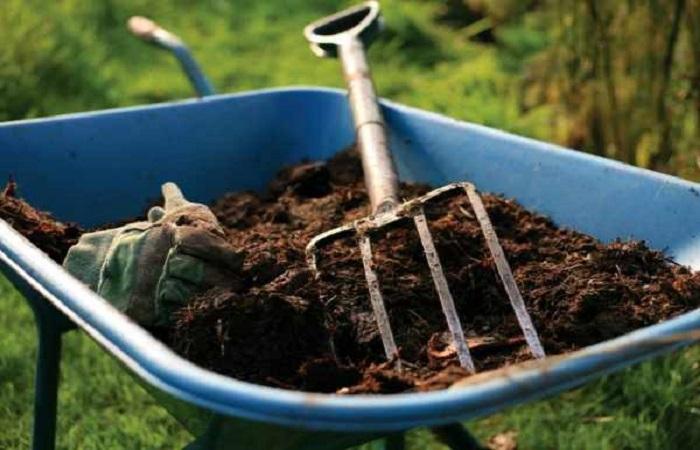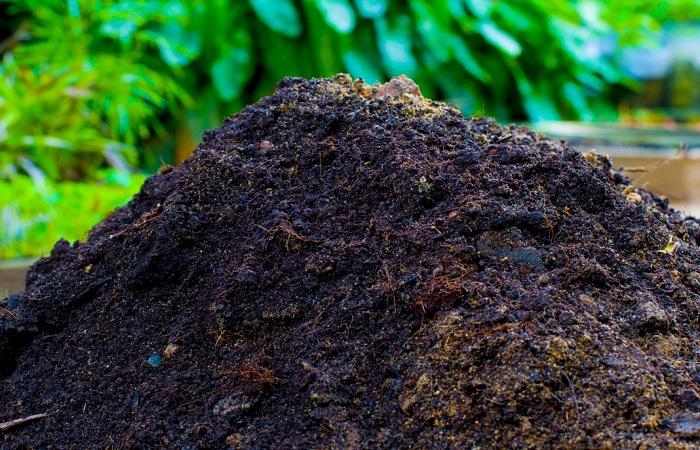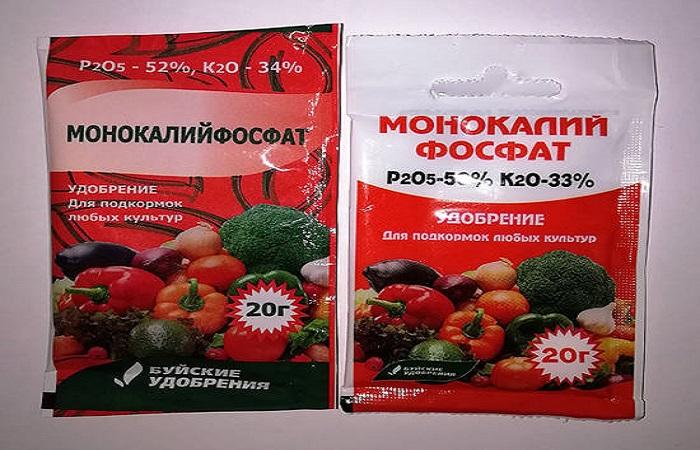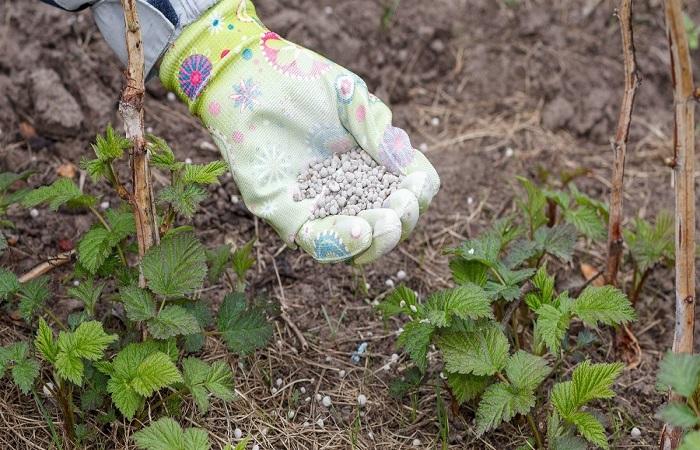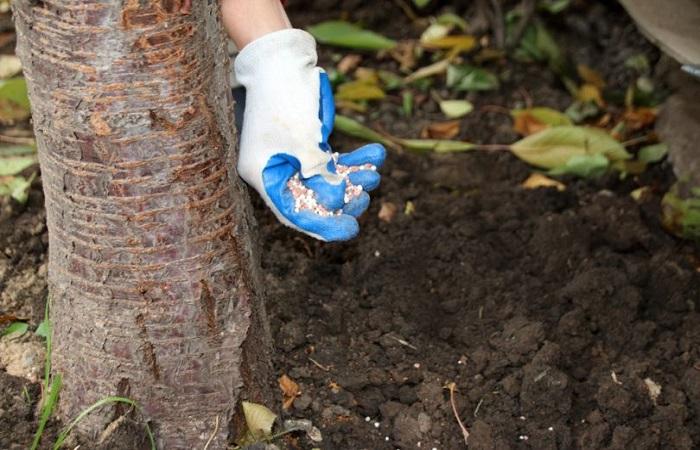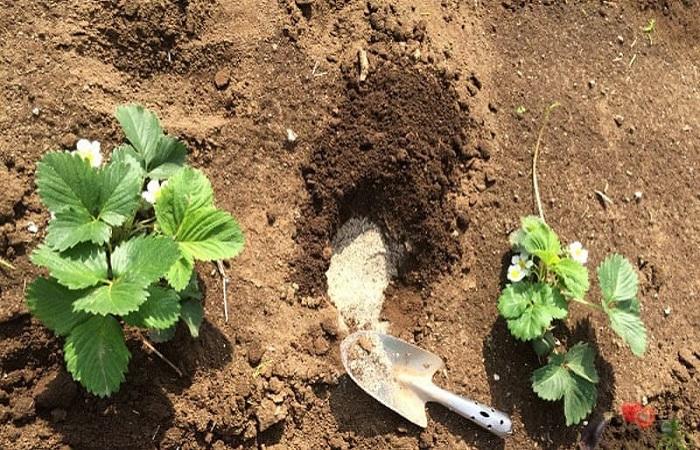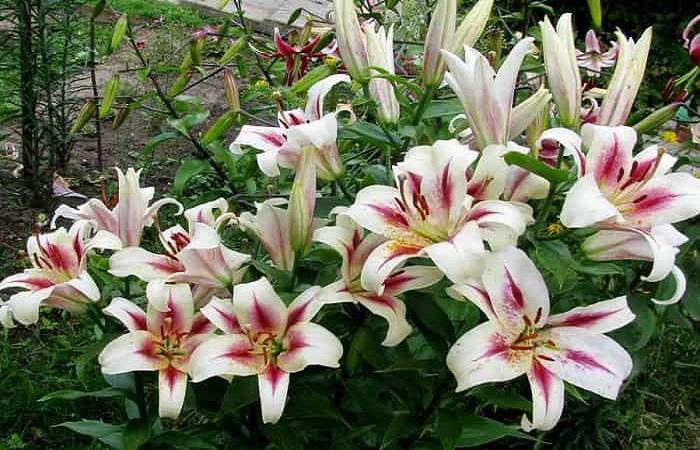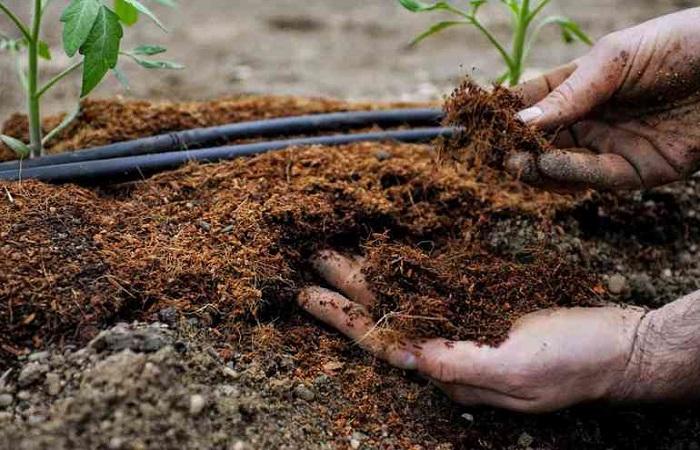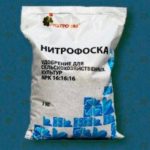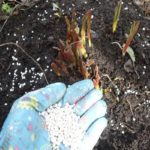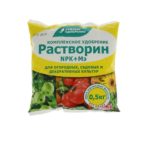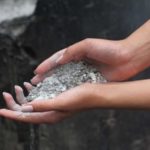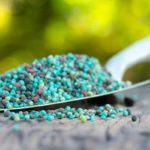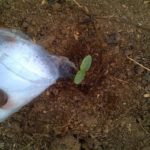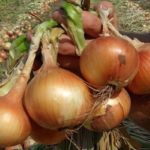Nutrient components are added to the soil not only in spring and summer, when cultivated plants are in the active growing season, but also before winter. The difference between autumn fertilizers is that they contain a high content of potassium and phosphorus and a minimum of nitrogen, which can provoke increased growth of green mass. Because of this, plants will not tolerate the cold period well and may even die.
- Features of applying fertilizer in autumn
- Types of minerals that are added in the fall
- Phosphorus
- Potash
- What fertilizers are applied to the garden in the autumn?
- Organic
- Mineral mixtures
- Rules and time of entry
- For berry bushes
- For fruit trees
- For conifers
- For strawberries
- For roses
- For lilies
- For the lawn
- For the garden
- For flowers
Features of applying fertilizer in autumn
To reap a rich harvest next season, experienced gardeners use special fertilizers that must be added to the soil in the fall. It is recommended to complete all procedures for fertilizing the soil before the end of September, then they will have time to be absorbed into the soil and begin their effect before the arrival of the first frosty days.
Autumn fertilizer is especially important for perennial crops, since during the growing season they have spent all their reserves of substances on the formation of fruits, and it will be difficult for them to survive the winter cold without an additional supply of organic and mineral elements. Over the winter, fertilizers will be converted into a form accessible to crops and will ensure active growth in the spring.
Among the main substances needed by each plant are nitrogen, potassium, calcium and phosphorus. Since the first macronutrient provokes active growth of green mass and shoots, it is not recommended to use it before winter, otherwise trees and shrubs may freeze. But phosphate fertilizers are an ideal solution for autumn fertilizer, since they are absorbed slowly and do not lead to active crop growth.
Among the advantages of the autumn use of mineral and organic fertilizers, it is worth highlighting the following points:
- Over the summer, the soil warms up, and beneficial microorganisms quickly absorb the added fertilizers and begin to process them into a state suitable for plants.
- In autumn, there is a sufficient amount of moisture in the soil, due to which fertilizers dissolve and their components are absorbed into the ground.
- Plants fed before the cold weather better resist the effects of low temperatures and the penetration of infectious agents.
- Toxic substances, often found in chemical preparations for fertilizing, have time to be washed and eroded from the soil before spring and do not penetrate into the fruits of cultivated plants in the summer.
- Those crops that overwinter in the soil have borne fruit by this time and are able to easily absorb the beneficial components of the preparations.
- With the arrival of warm days, the gardener is faced with the task of quickly sowing the garden, and there is not enough time to fully prepare the land. If fertilizers have been in the soil since autumn, before planting crops, it is enough to loosen the top layer and immediately begin sowing.
Types of minerals that are added in the fall
Before you start fertilizing before winter, it’s worth understanding which nutrients are most suitable and how they affect the soil and plants.
Phosphorus
This element is found in mineral fertilizers in a form that is difficult for plants to reach, and it takes time to transform into a form suitable for crops. As a result of chemical processes occurring during the winter period, phosphorus fertilizer becomes an easily digestible element.
This group includes drugs such as superphosphate, potassium metaphosphate, and phosphate rock. Most gardeners prefer superphosphate, which can be simple or double; in the first case, the amount of the main nutrient is about 20%, in the second - 50%. In addition to phosphorus, the fertilizer contains sulfur, magnesium, monocalcium phosphate and phosphoric acid. Both simple and double types of fertilizing are allowed to be used for all cultivated plants and on all types of soil.For better absorption and distribution in the soil, the fertilizer is mixed with organic matter - humus or compost, the consumption rate is 40 grams per square meter of garden (in the case of using double superphosphate, the rate is halved). The preparation is applied during the autumn digging of the soil.
Phosphorite flour is preferred by those gardeners who conduct organic farming. The fact is that this is a completely natural product, which is obtained by grinding phosphorites - sedimentary rocks - into powder. This fertilizer contains 20% phosphorus and 30% calcium, the rest comes from a complex of microelements. When using phosphate rock in your garden, adhere to a consumption of 2 kg of fertilizer per 10 square meters. meters of plot. It must be remembered that phosphorus-based flour contributes to soil deoxidation.
Potash
A substance such as potassium accelerates the process of photosynthesis, increases crop resistance to adverse weather conditions and strengthens immunity against common diseases. Since most types of fertilizer contain chlorine, it is recommended to apply it in the fall so as not to harm the plants. Until spring, the harmful element evaporates from the soil and no longer poses a threat to crops.
Among the most common potash fertilizers, the following preparations are worth highlighting:
- Calimagnesia.It contains 30% potassium and 17% magnesium. This variety is often used on sandy soils. 20 grams of potassium magnesia are consumed per square meter.
- Potassium chloride. Contains the highest concentration of the main component - 60%. But since it contains chlorine (40%), the fertilizer can only be used in the fall. For 1 sq. meter take 15-20 grams of the drug.
- Potassium sulfate. This type of potassium fertilizer acidifies the soil, therefore it is suitable only for alkaline soils or with a neutral reaction. From 15 to 30 grams of the drug are used per square area.
What fertilizers are applied to the garden in the autumn?
As part of preparing the site for winter, both organic and mineral fertilizers are used in the garden. The main thing is to correctly calculate the dosage of fertilizing and follow the recommended timing.
Organic
Organic fertilizers applied in the fall can increase soil fertility and prepare them for spring planting. Since the soil is resting at this time, beneficial microorganisms have time to fully process the fertilizer components. Organic matter decomposes slowly and is converted into humus over time. If you use them in the autumn for several years in a row, you will be able to improve the characteristics of even the most depleted soils.
Compost is considered one of the most readily available fertilizers for crops. When applied to light soils, it is possible to retain moisture in the ground longer; when applied to heavy clay soils, on the contrary, it increases water permeability. Organic fertilizer is prepared in the spring; in this case, by autumn it will acquire the necessary characteristics and beneficial properties.Use 2 buckets of fertilizer per square meter of garden.
During the autumn digging, both fresh and rotted manure are brought in, unlike in the spring. Ammonia, which is found in fresh fertilizer and is dangerous for cultivated plants, will disappear in the spring along with melt water and will not harm the plantings. Depending on the type of soil on the site, from 2 to 8 kg of manure per square meter of garden is used.
Since bird droppings are highly concentrated fertilizers, they must be used in diluted liquid form. The most commonly used concentration is 1:20; it is safe for crops.
The use of wood ash, rich in potassium, is advisable only on heavy clay soils; on other types of soil it will simply be washed away by melt water, and the fertilizer will not be beneficial. About 2 cups of organic fertilizer are used per square meter of area.
Mineral mixtures
When choosing a complex mineral fertilizer to apply on your site, you should pay attention to the inscription on the label. As a rule, formulations intended for autumn use are marked accordingly. Such fertilizers contain virtually no nitrogen; instead, they contain an increased concentration of phosphorus and potassium.
Among complex fertilizers, it is recommended to pay attention to the following preparations:
- Monopotassium phosphate. Water-soluble fertilizer is intended for feeding any crops.
- Borofoska. In addition to the main components, the composition contains boron, calcium and magnesium.
Rules and time of entry
In order for fertilizers used in the fall to bring the expected results, it is necessary to follow the timing of fertilizing and the rules for their use.
For berry bushes
For a garden in which currant, raspberry and gooseberry bushes are planted, both mineral and organic compositions are suitable. It is necessary to start applying fertilizers from the end of summer to mid-October, depending on the growing region. Nutrient mixtures can be laid out around the perimeter of the tree trunk circle, or they can be embedded in small ditches dug between the rows.
For fruit trees
Before winter, both organic and mineral fertilizers are used to feed fruit and berry trees, the main thing is that they do not contain nitrogen, which will provoke increased shoot growth. Different complexes are prepared, depending on what type of crop grows in the garden:
- For cherries and plums, dry manure or bird droppings are used, embedded in the tree trunk. After a week, prepare a nutrient solution consisting of 40 liters of water, 10 tablespoons of superphosphate and 8 tablespoons of potassium sulfate. Trees are watered with this liquid in early autumn at the rate of 2 buckets per adult specimen.
- Pears and apple trees. For a tree whose age does not exceed 8 years, prepare 10 kg of humus, which is enriched with 200 grams of potassium sulfate and 300 grams of superphosphate. This mixture is distributed around the perimeter of the tree crown and dug up with soil.
For conifers
There are special complexes on sale intended for autumn feeding of coniferous plants.They begin to apply fertilizers at the dacha from the first days of September, and finish by the beginning of October. The drugs can be used in both granular and liquid form. It is recommended to purchase potassium sulfate; it slightly acidifies the soil, which has a beneficial effect on coniferous crops. You can also take potassium phosphate and use it at a dosage of 10 grams per 10 liters of water.
For strawberries
Fertilizing of garden strawberry bushes is carried out from September to October, combining this procedure with pruning the leaves. Bird droppings are considered a universal fertilizer for this crop, which is diluted with water in a ratio of 1 to 20. This composition is infused for 2 days, and then the furrows between the plants are poured. It is necessary to ensure that the solution does not get on the leaves, otherwise it will lead to burns.
At the end of October, crops should be fed with potassium and phosphorus. Ash infusion has proven itself well; to prepare it, 150 grams of ash are diluted in 10 liters of water and 500 ml of solution is poured under each bush.
For roses
The use of fertilizers in the rose garden begins in early September. To prepare the solution, take 1 liter of hot water and dissolve 50 grams of superphosphate in it. The leaves of the crop are sprayed with this liquid.
Another recipe consists of 10 liters of water, 5 g of superphosphate and 5 g of potassium monophosphate. The solution is used to water the roots.
For lilies
Fertilizers for lilies begin to be applied in the last days of August; this is done twice with an interval of 2 weeks. Potassium magnesium is used, consumption per square meter is 30 grams. The first time, the fertilizer can be applied in dry form, and the second time, prepare a solution consisting of 6 liters of water, 2 tbsp. spoons of potassium magnesia and 1 tbsp. spoons of superphosphate.
For the lawn
The timing of applying fertilizers for lawn grass depends on weather forecasts.Fertilizing is carried out 10 days before the onset of the first frost.
It is preferable to use double superphosphate, the consumption rate is 50-70 grams per square meter of area.
For the garden
It is recommended to fertilize the soil and prepare it for the next season with fresh manure. However, it must be remembered that such fertilizing can be used no more often than once every 3 years. It is scattered over the area before digging at the rate of 3 kg per square meter and embedded on the bayonet of the shovel.
For flowers
The main components needed by flowers are potassium, phosphorus and magnesium. They are introduced for digging in September at the rate of 15 g of superphosphate and 15 g of potassium salt per square meter. If flowers are already planted on the site, then these components are dissolved in 10 liters of water and the plants are watered at the roots.

